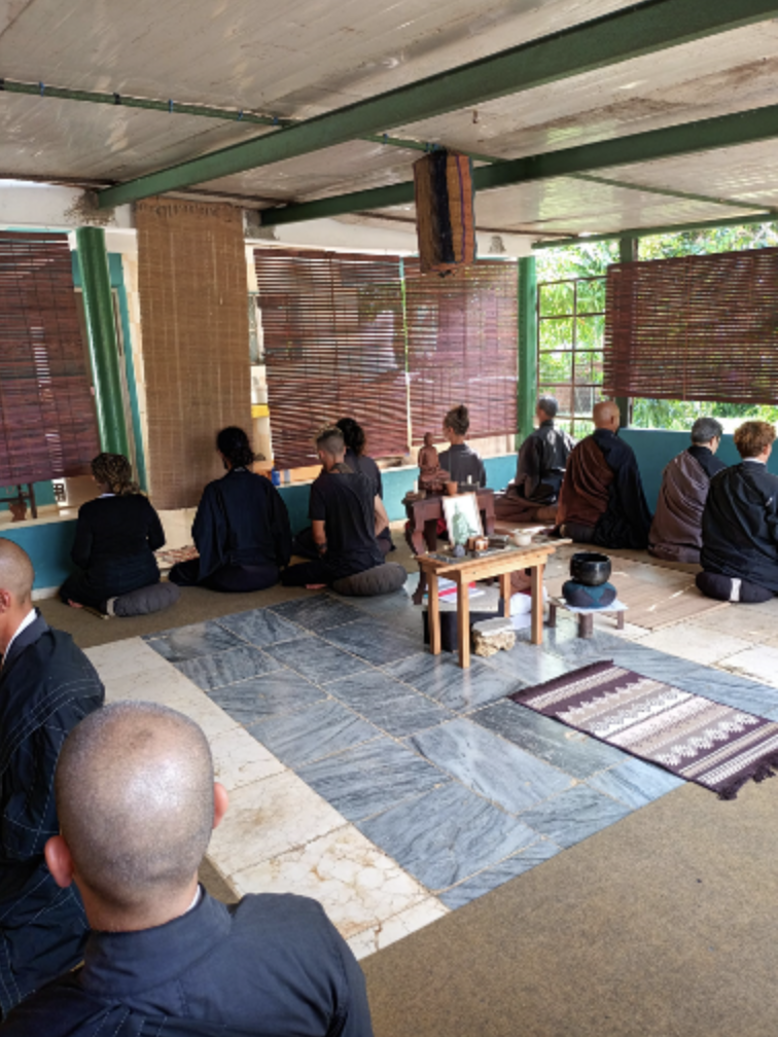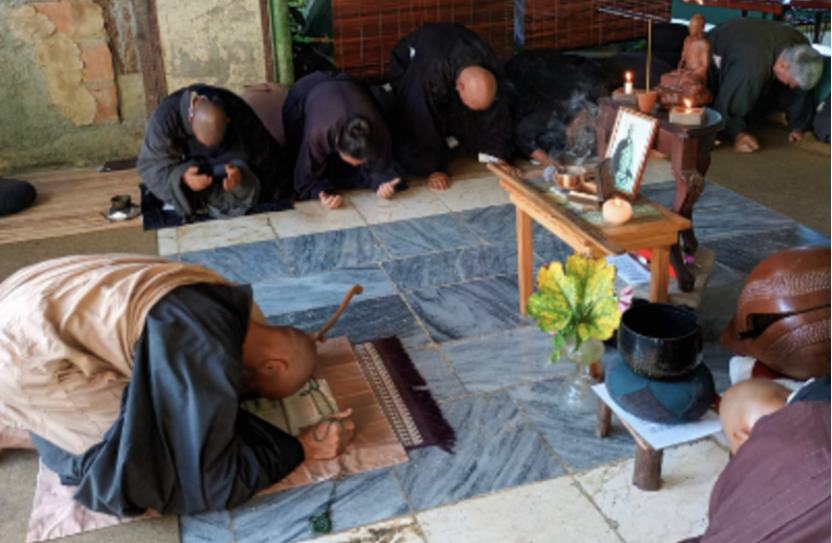By Belén Boville
Belén Boville is a journalist and writer. She is a Soto Zen Buddhist nun ordained by Master Barbara Kosen
Just before the sesshin began, during the days of preparation, Master Michel had to make several arrangements; he went to the bank and, as the ATM was open and working, there was a three-hour queue. For some years now, all Cubans have been required to have a sort of bank account in MLC or freely convertible currency, a card to handle Cuban money, and to be able to buy goods or food outside the ration card, which provides less and less food.
A three-hour queue is life. It is life in a queue; they are all queues.
Cuba is an economic disaster. When Fidel Castro came to power, he dismantled all the sugar mills. This trade and training that had been handed down from father to son was lost. The Cuban mills were the first sugar producers in the world. When they were gone, the price of sugar went up again because beet sugar is infinitely worse. Castro let this industry die. When the world’s leading producer departed, the price of sugar went up again, but they were already out of the market. The same thing has happened with agricultural products; children no longer know what an orange is, and they say that the ones they grow are exported; there are no oranges to consume. When I first travelled to Cuba in 1995, oranges were everywhere. Almost thirty years have passed and they are nowhere to be seen.
The salaries are absolutely ridiculous: a pensioner, people who made the revolution, earns 1,500 pesos, about 56.5 euros a month, and professionals such as architects or lawyers earn between 4,000 and 6,000 pesos (150–225 euros).
Religions and spiritual beliefs in the 21st century, are seen as a lesser, necessary evil for the Cuban government. The main cultural association of African syncretism, Abakuá, is known as ñaños and very widespread on the island and was clandestine until recently.
Revolutionaries were not allowed to have religion. If you were in the Communist Party, it was forbidden to profess any spiritual belief. In November 1991, the Cuban Communist Party allowed believers to join its ranks, and from then on, it began to relax controls and allow supposed freedom of religion.
The Catholic Church is now the most widespread religion in the country, followed by the thriving and increasingly powerful evangelist denominations. Evangelicals have spread and some people have prospered, their home circumstances having been greatly improved by becoming evangelical pastors. But for these zealous missionaries, anyone who is not a Christian is the devil.
At the end of the sesshin, we enjoyed a few days in Havana. I visited several temples of the evangelists, which were immaculate, and the church of the Cristóbal Colon cemetery in Vedado. I wandered through the twists and turns of the streets and stalls. Old Havana is magnificent and a very beautiful city. Declared a World Heritage Site by UNESCO in 1982, it has been gradually restored. But in these hot months, there is hardly any tourism, and the merchants of the San José Street market are desperate to get a few tourists into their shops.

We stayed in Vedado, an upper-middle-class neighborhood that flourished at the end of the 19th century and after independence, with a succession of single-family houses that used to be authentic palaces and now is more like a sleepy neighborhood thanks to the the idleness and lack of resources of their current owners. Some houses are being restored. Cuba lives on foreign exchange sent by emigrants, and some of them, in very good situations, have been able to buy houses in good conditions for their relatives who still live here.
Life in the city is complicated. If several Cubans are queuing at the bank or a government office, all you hear are complaints and anecdotes from the previous day about what so-and-so had to do to buy chicken or lentils, or some other matter of daily survival.
Our dojo is also in Vedado, in a beautiful Art Deco building. On the third floor, with a multidirectional layout, the breeze circulates and caresses your back as you sit in zazen. Our Cuban colleagues for the sesshin are arriving one by one, some of them coming from very distant neighbourhoods and making the effort to arrive after several hours of walking or waiting for public transport. Quite a daily feat.
For us Europeans, the practice of zazen in Cuba is an example of dignity and determination. Despite all the difficulties, people are practising the Way and all that it entails. Michel Tei Hei’s Sangha organizes a monthly sesshin in the new temple, allowing foreign visitors to stay longer and organizing an extended sesshin during the Christmas holidays. The spring temperatures then attract many visitors from other latitudes. For those of us who live in the “free” world of consumerism, visiting Cuba and practising zazen with the Cuban Sangha was rewarding and a unique experience that I’d like to recommend to everyone.
Master Michel’s phone and WhatsApp in Cuba is +5353496254 and the email of the Cuban dojo is [email protected]. Follow the dojo on Instagram attemplo_zen_kosenshinji


